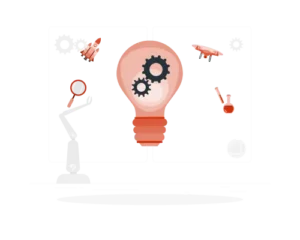The world of Artificial Intelligence (AI) continues to evolve at an unprecedented pace, and 2025 is poised to be a landmark year for innovation and transformation. As organizations strive to stay ahead in the digital race, understanding the emerging AI trends will be crucial. In this comprehensive guide, we delve into ten key AI trends to watch out for in 2025.
AI Trend 1: Agentic AI
Agentic AI is redefining how autonomous systems operate, enabling them to independently make decisions and execute actions to achieve specific goals. These systems are particularly invaluable in high-stakes scenarios such as disaster response, where timely decisions can save lives, and real-time analytics, where rapid data processing drives competitive advantages.
Why It Matters
Agentic AI combines advanced techniques such as memory retention, environmental sensing, strategic planning, and adaptive learning. By 2028, Gartner predicts that 15% of daily work decisions will be autonomously made by agentic AI systems, up from virtually none in 2024. This evolution marks a paradigm shift in operational efficiency and decision-making across industries, heralding a new era of productivity and innovation.
Key Use Cases
- Automating complex customer interactions with adaptive intelligence.
- Enhancing situational awareness in dynamic environments like supply chain operations.
- Streamlining project management by autonomously allocating resources and mitigating risks.
AI Trend 2: AI Governance Platforms
As AI becomes integral to decision-making, ensuring its ethical and responsible deployment is paramount. AI governance platforms are emerging as essential tools for organizations to maintain control over their AI initiatives. These platforms provide robust frameworks to monitor, regulate, and fine-tune AI systems, ensuring alignment with societal values, corporate ethics, and regulatory compliance.
Why It Matters
AI governance addresses critical issues such as bias, transparency, accountability, and ethical use of technology. With AI systems influencing areas like hiring, lending, and healthcare, ensuring fairness and equity is no longer optional. By 2028, organizations leveraging these platforms are expected to achieve 30% higher customer trust ratings, signalling their commitment to responsible AI practices.
Key Use Cases
- Implementing real-time monitoring to detect and rectify biases in AI models.
- Auditing decision-making processes for fairness and compliance.
- Managing risks associated with AI-powered systems in healthcare and finance.
AI Trend 3: Disinformation Security
The rise of sophisticated AI tools has intensified the challenge of disinformation, presenting risks across industries and societies. Disinformation security, a cutting-edge discipline, leverages AI and digital forensics to detect, analyse, and mitigate the spread of fake news, deepfakes, and malicious impersonations. These tools utilize machine learning models trained on vast datasets to distinguish between authentic and manipulated content, providing a proactive defence mechanism against emerging threats.
Why It Matters
Adversaries are increasingly exploiting AI for social engineering, fraudulent activities, and targeted misinformation campaigns, creating significant challenges for organizations and governments alike. The financial and reputational damages caused by unchecked disinformation can be profound. Robust disinformation security measures are no longer optional; they are essential to maintaining trust, safeguarding information integrity, and ensuring organizational resilience. By 2028, half of all enterprises are expected to adopt advanced tools and frameworks specifically designed to address disinformation risks, reflecting the growing recognition of this pressing issue.
Key Use Cases
- Identifying synthetic media in sensitive contexts.
- Monitoring and countering malicious narratives targeting brands and individuals.
- Preventing impersonation and fraudulent activities through advanced behavioural analysis.
AI Trend 4: Responsible AI
Responsible AI emphasizes the integration of ethical principles throughout the lifecycle of AI systems, ensuring that these technologies are fair, transparent, and aligned with human-centric values. This involves creating AI models that are free from biases, are interpretable by users, and comply with societal norms and regulations. The ultimate goal is to foster AI systems that enhance human well-being while preventing harm or exploitation.
Why It Matters
As AI adoption expands across sectors, the potential for misuse, whether intentional or inadvertent, increases significantly. From biased hiring algorithms to opaque decision-making in critical areas like healthcare, the risks of unregulated AI are profound. Responsible AI frameworks act as a safeguard, helping organizations build and maintain trust by ensuring accountability, fairness, and compliance with ethical standards. By prioritizing responsible AI practices, businesses can not only mitigate ethical dilemmas but also gain a competitive advantage in a market increasingly driven by consumer trust and regulatory scrutiny.
Key Use Cases
- Embedding fairness metrics into AI model training.
- Creating explainable AI systems that provide insights into decision-making processes.
- Ensuring AI-driven automation adheres to legal and societal norms.
AI Trend 5: Quantum AI
Quantum computing is set to revolutionize AI by solving problems that were previously infeasible due to the limitations of classical computing. Quantum AI merges the unparalleled computational power of quantum systems with advanced AI algorithms, enabling groundbreaking advancements in diverse fields.
Why It Matters
Quantum AI accelerates complex computations that are critical for modern challenges. For instance, in cryptography, quantum AI can develop encryption techniques that are resilient against potential quantum threats, ensuring secure data transmission in the future. In drug discovery, it can simulate molecular interactions at an unprecedented scale, drastically reducing the time needed to develop new medications. Similarly, in climate modelling, quantum AI enables highly accurate simulations of environmental changes, aiding in devising effective strategies to combat climate change. These capabilities provide organizations with a significant competitive edge, allowing them to innovate and address global challenges effectively.
Key Use Cases
- Enhancing encryption techniques to counter quantum decryption threats.
- Accelerating simulations for material science and pharmaceuticals.
- Solving optimization problems in logistics and supply chain management.
AI Trend 6: Conversational AI
Conversational AI continues to transform customer engagement through advanced natural language processing (NLP) capabilities. From chatbots to virtual assistants, these systems are becoming increasingly intuitive, capable of understanding context, tone, and even emotions to deliver a more personalized and seamless user experience. Modern conversational AI systems leverage cutting-edge technologies such as large language models (LLMs) and multimodal inputs to interpret voice, text, and even visual cues.
Why It Matters
By 2025, conversational AI will power over 70% of customer interactions, significantly improving efficiency, customer satisfaction, and brand loyalty. Businesses can expect reduced operational costs by automating routine queries and achieving faster resolution times. Furthermore, as conversational AI becomes more human-like, it will facilitate deeper customer connections, paving the way for increased adoption across industries such as e-commerce, healthcare, and education.
Key Use Cases
- Delivering personalized customer support through AI-driven chatbots.
- Facilitating multilingual interactions for global audiences.
- Enhancing employee productivity with AI-enabled virtual assistants.
AI Trend 7: AI and Human Collaboration
The synergy between AI and human intelligence is unlocking unprecedented productivity and transforming how industries operate. AI acts as a powerful tool to enhance human creativity, automating repetitive and time-consuming tasks while generating actionable insights that drive strategic decision-making. By leveraging the strengths of AI alongside human ingenuity, businesses can achieve new levels of efficiency and innovation.
Why It Matters
AI-human collaboration fosters innovation and adaptability, which are critical in dynamic and fast-changing industries. This collaboration enables organizations to address complex problems more effectively, maintain a competitive edge, and empower employees to focus on higher-value activities that require creativity and emotional intelligence. As industries become increasingly reliant on this partnership, the synergy between AI and humans will redefine productivity and innovation standards.
Key Use Cases
- Enhancing decision-making in critical operations through AI-driven insights.
- Automating routine tasks to free up human resources for creative endeavours.
- Supporting personalized learning experiences in education and training.
AI Trend 8: AI and Cybersecurity
AI is reshaping the cybersecurity landscape by enabling real-time threat detection, proactive defence mechanisms, and predictive analytics. These systems utilize machine learning algorithms to process and analyse vast amounts of data at unprecedented speeds, identifying vulnerabilities, abnormal patterns, and potential threats before they can cause significant damage. By integrating AI with cybersecurity protocols, organizations can achieve a heightened level of security.
Why It Matters
With cyberattacks becoming more sophisticated and frequent, AI-driven cybersecurity is essential for protecting sensitive data, maintaining system integrity, and safeguarding critical infrastructure. Traditional methods often fall short in addressing the dynamic and evolving nature of cyber threats. AI not only enhances detection capabilities but also automates incident responses, ensuring quicker resolutions and minimizing the impact of breaches. As the digital landscape expands, AI-powered cybersecurity solutions are poised to become a cornerstone of organizational resilience and trust.
Key Use Cases
- Predicting and mitigating potential cyberattacks using machine learning models.
- Enhancing fraud detection in financial transactions.
- Automating incident response to minimize downtime and impact.
AI Trend 9: Decentralized AI
Decentralized AI distributes intelligence across edge devices and decentralized networks, significantly reducing reliance on centralized infrastructure. By decentralizing processing and decision-making, this approach enhances system scalability, resilience, and data privacy. Instead of data traveling to a central location, decentralized AI processes it locally, enabling quicker responses and reducing bandwidth requirements.
Why It Matters
Decentralized AI is crucial for applications requiring low latency, high security, and real-time responsiveness, such as IoT devices, autonomous vehicles, and smart cities. By processing data locally, these systems minimize risks associated with data breaches and ensure compliance with privacy regulations. Additionally, decentralized AI fosters innovation in industries that demand localized insights and rapid execution, paving the way for more efficient and secure technological ecosystems.
Key Use Cases
- Enabling real-time decision-making in edge computing environments.
- Enhancing data privacy through localized processing.
- Supporting decentralized finance (DeFi) applications with secure AI algorithms.
AI Trend 10: Hybrid Computing
Hybrid Computing integrates various computational technologies, such as CPUs, GPUs, and quantum systems, to tackle complex problems more effectively. CPUs handle general-purpose tasks, GPUs excel in parallel processing for tasks like AI and simulations, and quantum computing offers potential breakthroughs in areas like optimization and cryptography. By combining these systems, hybrid computing leverages the unique strengths of each to address a broad range of computational challenges.
Why It Matters
Hybrid computing enhances performance and scalability by allowing systems to choose the most suitable computational resource for specific tasks. This flexibility is essential for accelerating advancements in AI research and applications. By optimizing resource allocation, hybrid systems enable faster, more efficient solutions to complex problems, driving innovation in fields like machine learning, scientific research, and data analysis. As AI continues to evolve, hybrid computing will be key to unlocking its full potential.
Key Use Cases
- Running high-performance simulations in scientific research.
- Balancing workloads between on-premises and cloud infrastructure.
- Accelerating AI model training and deployment across diverse platforms.
Conclusion
The AI trends of 2025 underscore the transformative potential of technology in shaping industries and societies. From enhancing collaboration to addressing ethical concerns, these trends highlight the dual imperative of innovation and responsibility. Businesses and individuals alike must embrace these advancements to thrive in an increasingly AI-driven world.
By integrating these trends into strategic planning, organizations can unlock new opportunities and navigate the complexities of the digital era effectively. The journey into 2025 promises to be an exciting chapter in the ever-evolving story of AI.




